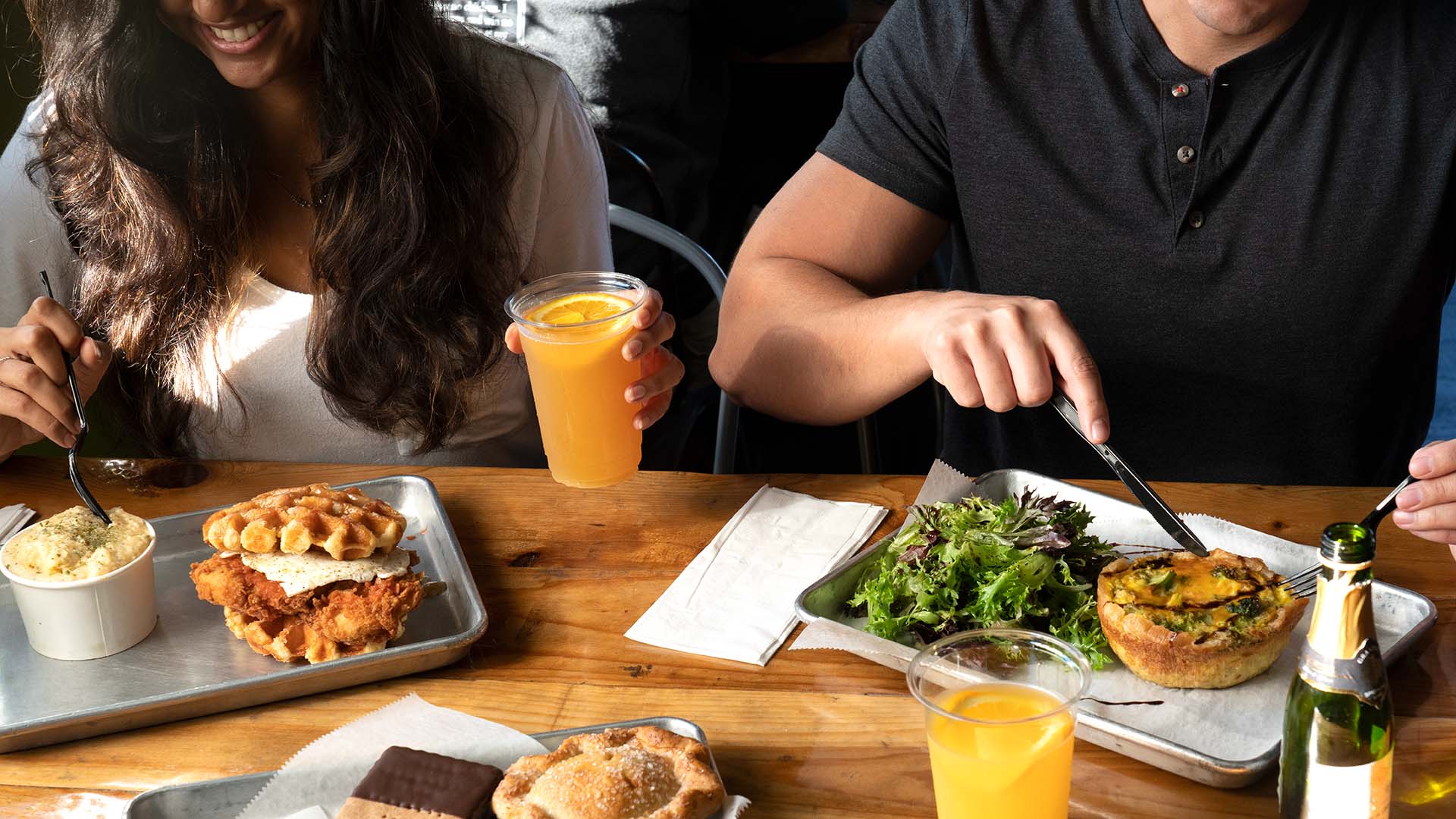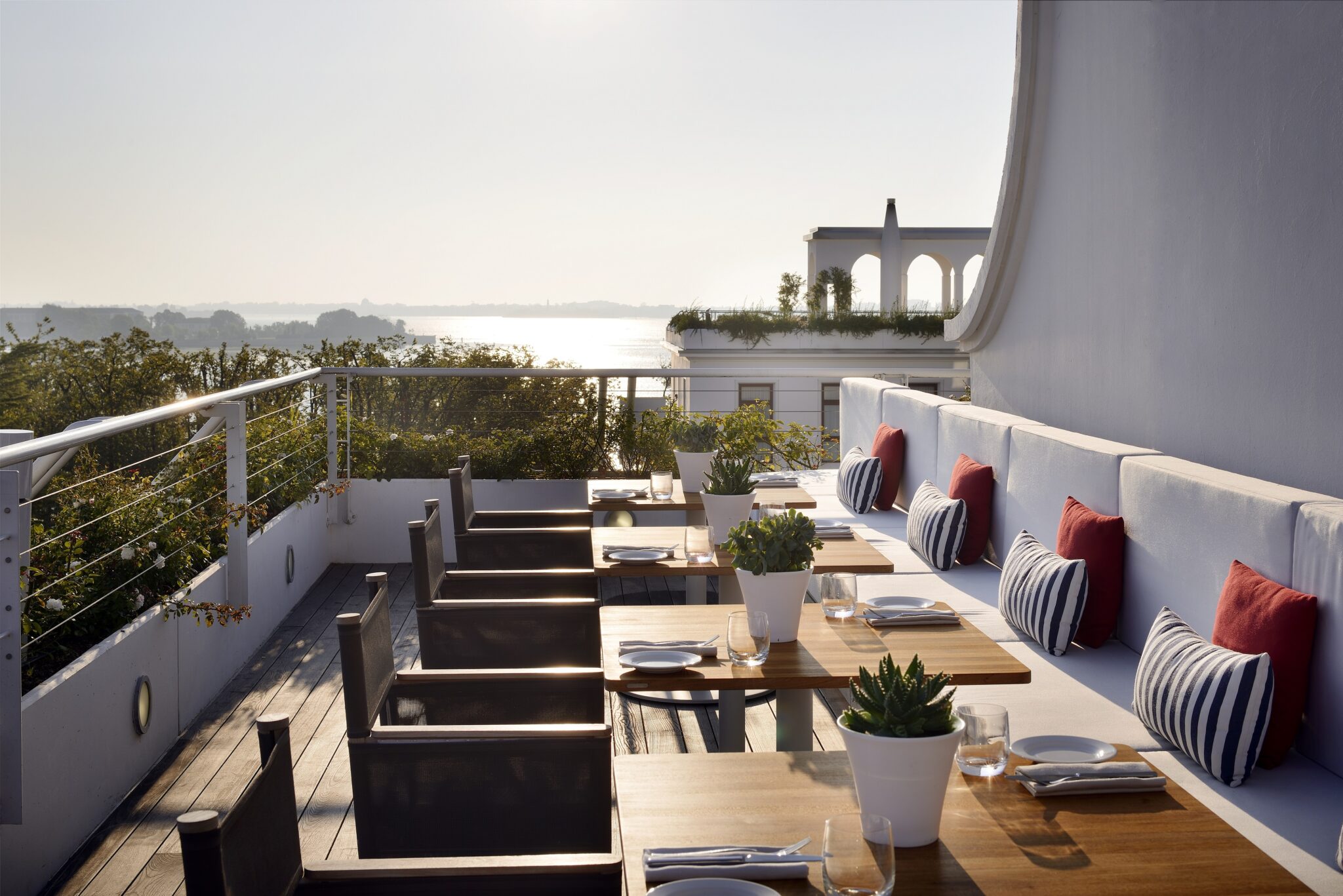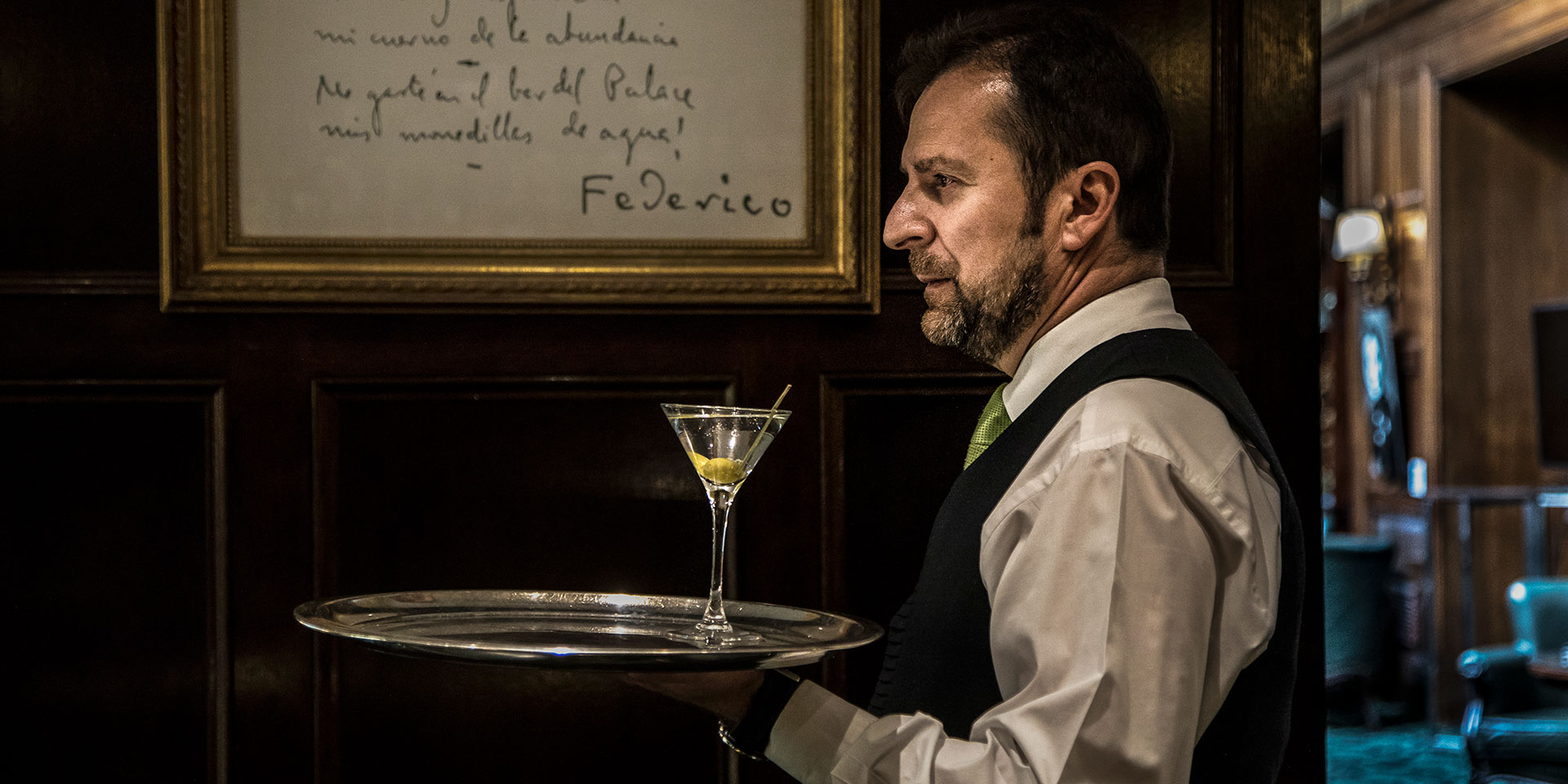
Savor the history — and tasty cocktails — at The Westin Palace’s 1912 Museo Bar in Madrid. (Photo: Marriott International)
Eat + DrinkSoak in the History — and Drink Where Hemingway Sipped — at Madrid’s 1912 Museo Bar
By Micaela Marini HiggsStepping inside Madrid’s 1912 Museo Bar is like entering the best kind of time capsule — one with strong drinks and plush seating alongside a hearty dose of history. Ensconced in its wood-paneled walls, low green armchairs and subtle lighting, you’ll gaze upon historic images hanging along one wall and the artifact-filled display cases along the other.
Together they tell the story of the city and how a hotel and its bar have come to play such a big part in its past — and present.
To arrive at the bar, visitors first enter the lobby of The Westin Palace, a sweeping space filled with bright marble pillars and richly painted ceilings and walls. Commissioned by King Alfonso XIII, the monumental building was constructed in just 18 months and sits on the site of a former palace along the Paseo del Prado. When the hotel opened in 1912, it was the largest and most modern accommodation in Europe
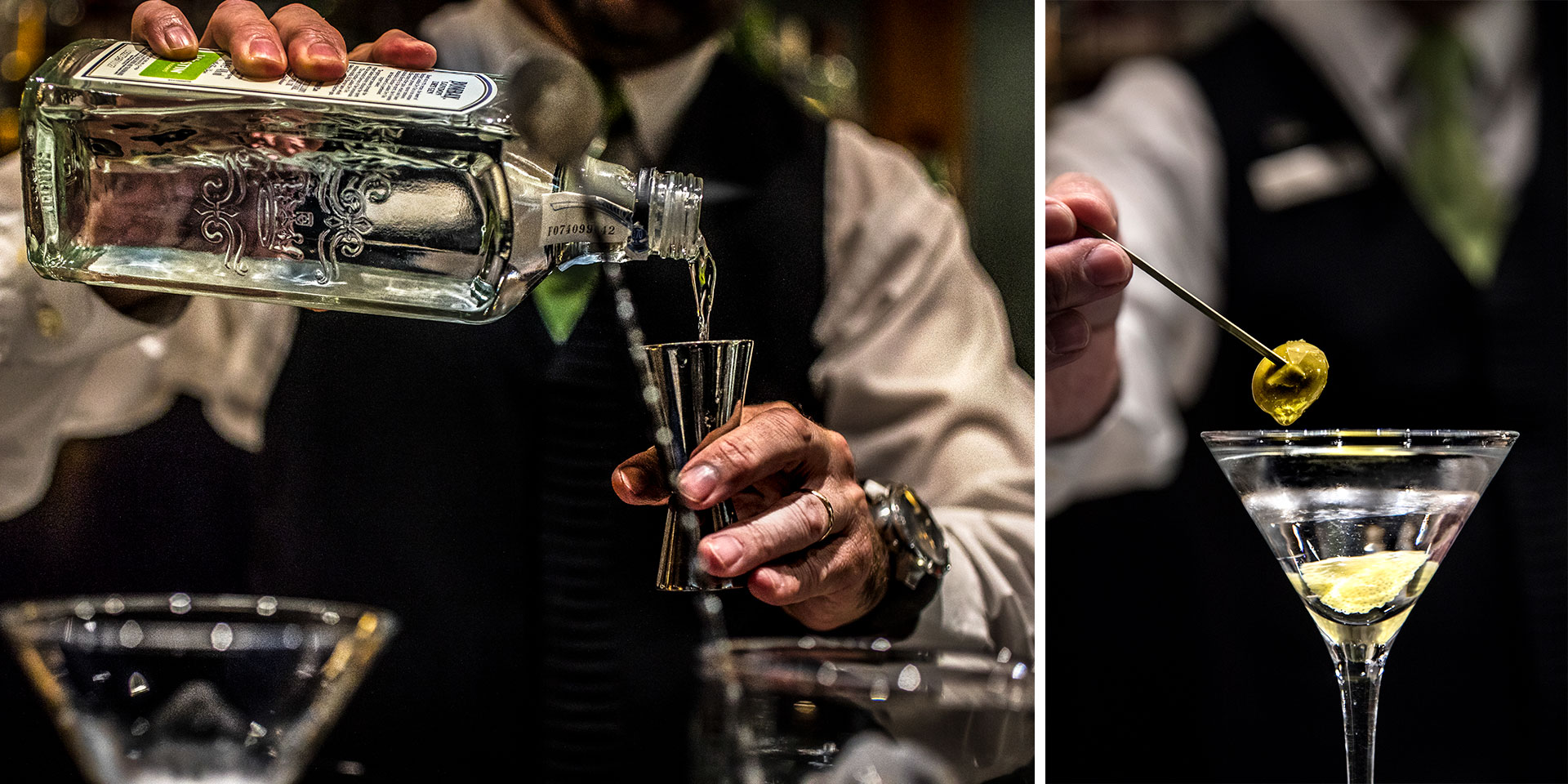
Since then, the hotel continues to stay on the cutting edge of modern design thanks to careful renovations that preserve its original charms while keeping guests pampered with modern amenities and perks, such as sachets of calming lavender left by each guest room bed, rentable workout gear and custom running routes through nearby Retiro Park.
But its allure has always been about more than just the building’s beauty. It’s come from the people who flock to it. Unlike other hotels at the time, which primarily catered to aristocracy and were selective about who they would let enter, the Palace was the first luxury locale in Madrid that welcomed a larger segment of society.
This hospitality made the hotel a hotspot for promising young artists, rising writers and popular intellectuals. Today it continues to lure in the creative set along with visiting heads of state, international celebrities and even royalty — the king of Spain was spotted leaving The Westin Palace on a recent evening.
At the heart of the hotel, 1912 Museo Bar has evolved into a natural gathering spot for guests of the Palace, visitors to the city and locals alike, says Paloma García, the hotel’s communications and public relations manager, who enjoys collecting stories about the building’s history.
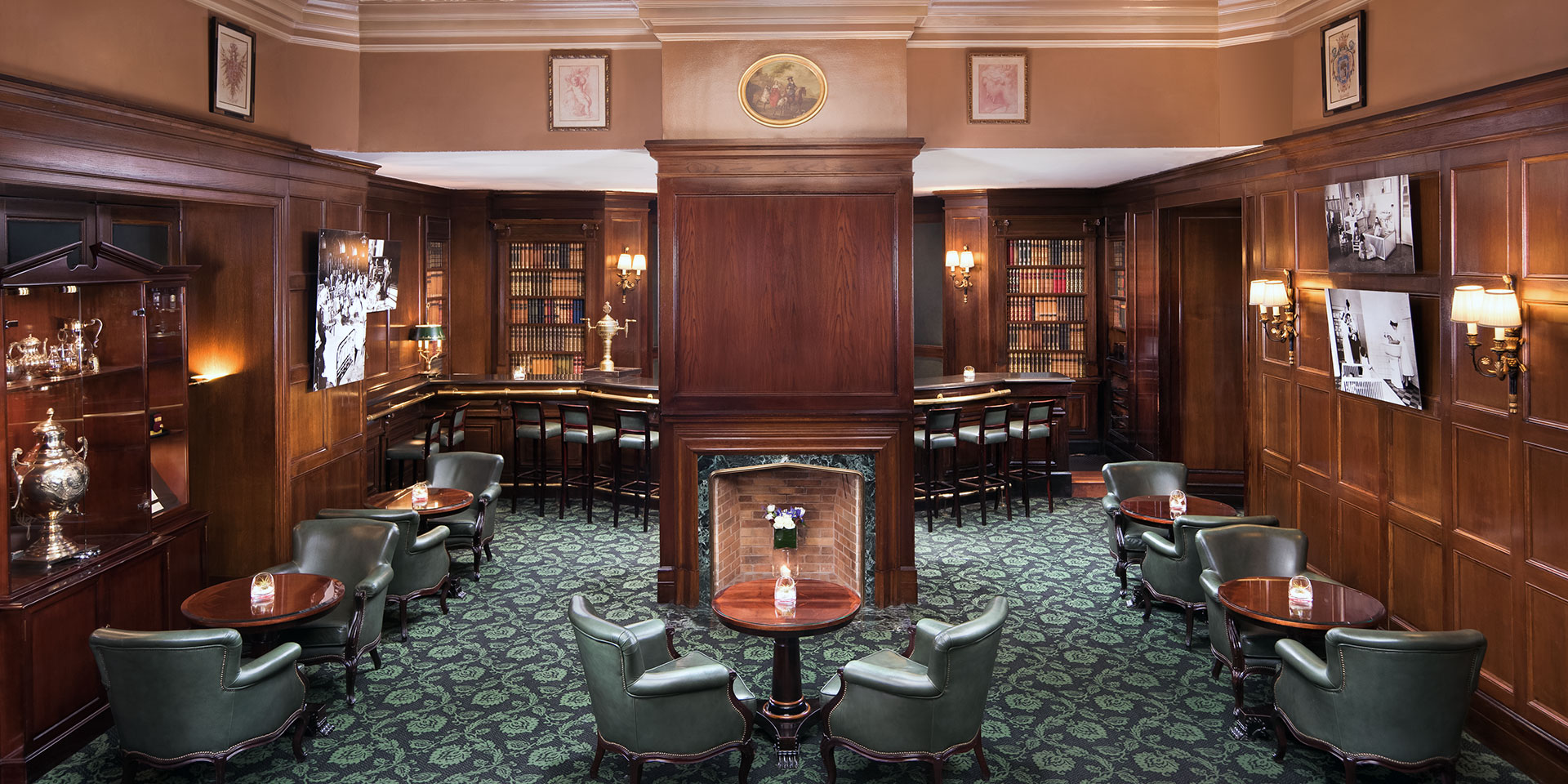
“People come who want to see and be seen,” says García, “It’s always been a place where you know you’re going to find fascinating people, but its ambience makes it feel natural, not pretentious.”
The 1912 Museo Bar, in particular, has been witness to all parts of the property’s past, whether serving guests like Picasso or Marlon Brando, acting as the social hub for the poets and writers of the Generation of 1927, or being used as a hospital during the Spanish Civil War.
And though it’s hard to imagine today as you watch well-heeled people sipping handcrafted cocktails, during the war, soldier’s beds filled the bar, and the adjoining cupola was used as an operating room — the space’s magnificent stained glass dome filled the space with much-desired natural light.
Many of these hidden histories were revealed to hotel staff in 2013 when artifacts and memorabilia were rediscovered during a renovation. Seeing their value, the management team decided to put them on display.
“History is something you can’t buy; it’s something you have to protect, even as you adapt to the new needs of people today,” she explains. “Because when [history] is lost, it’s gone.”
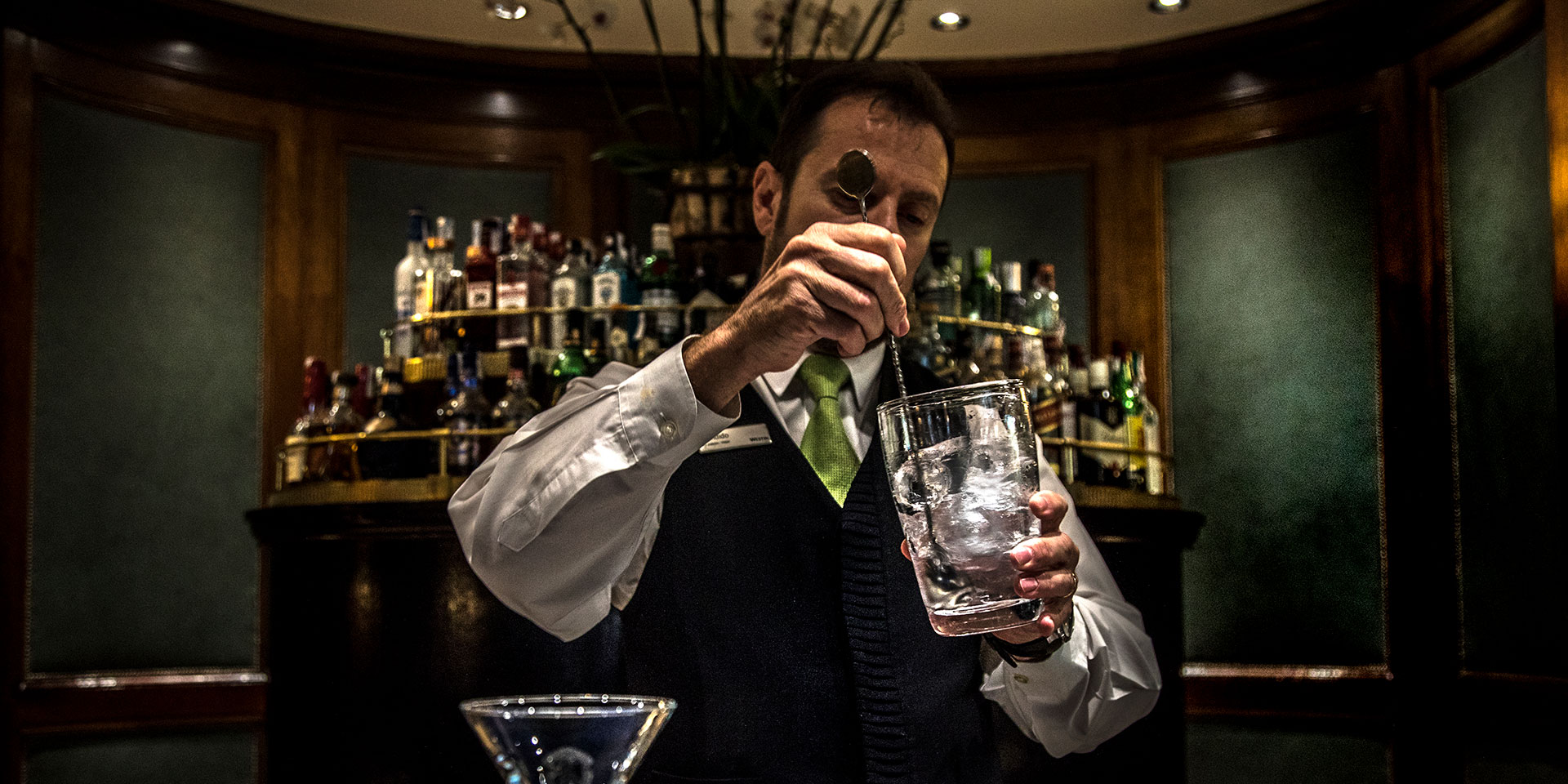
Placed in understated wooden cases, each artifact is accompanied by labels with detailed information about the piece. Seen together, the displays make the room feel richer — filled with the glimmer of ghosts and great minds.
The display case to the left of the bar holds a piece of hotel stationery bearing a note and poem penned by Federico García Lorca, embellished with doodles by Salvador Dalí. In it, the men ask a friend to loan money to filmmaker Luis Buñuel, which they note is something they would have done themselves except they already spent everything they had at the hotel bar.
When she mentions Dalí, García shakes her head regretfully, recounting the story of how the eccentric artist once painted directly onto the wall of his room and a dutiful housekeeper washed the art away.
“Que pena,” she sighs — what a shame.
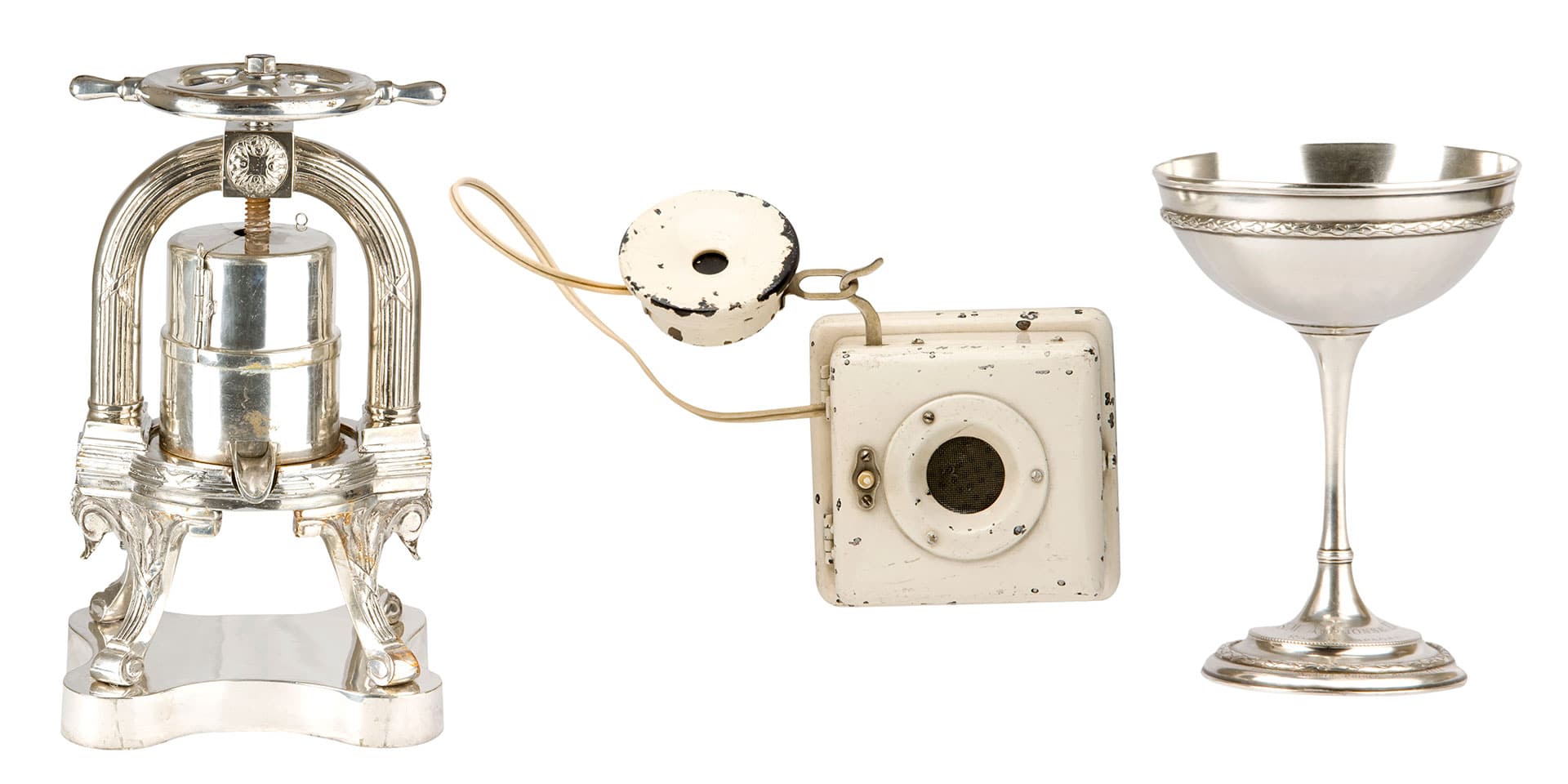
Near the entrance to the bar, the silver cups used by the royal family during the hotel’s inauguration sit in the same display case as stacks of employee records, complete with images of the original hotel staff staring out from their passport-sized photos. Neat cursive handwriting lists out their birthdates and occupations, some of which, like “Revolving Door Pusher,” no longer exist.
The past, and the people in it, are worth remembering even without celebrity, says García, and “people still come to search for their relatives in these files.” The bar and these documents remain as a living record, a peek into the past and part of a story that only continues to grow.
And because of its popularity among the creative set, the bar has a second life in literature, a popular backdrop for stories set in Madrid. Ernest Hemingway commemorated his favorite hangout in his 1926 novel “The Sun Also Rises,” and considering that Hemingway’s love of a good drink is almost as famous as his writing, his bar endorsement is a compelling one.
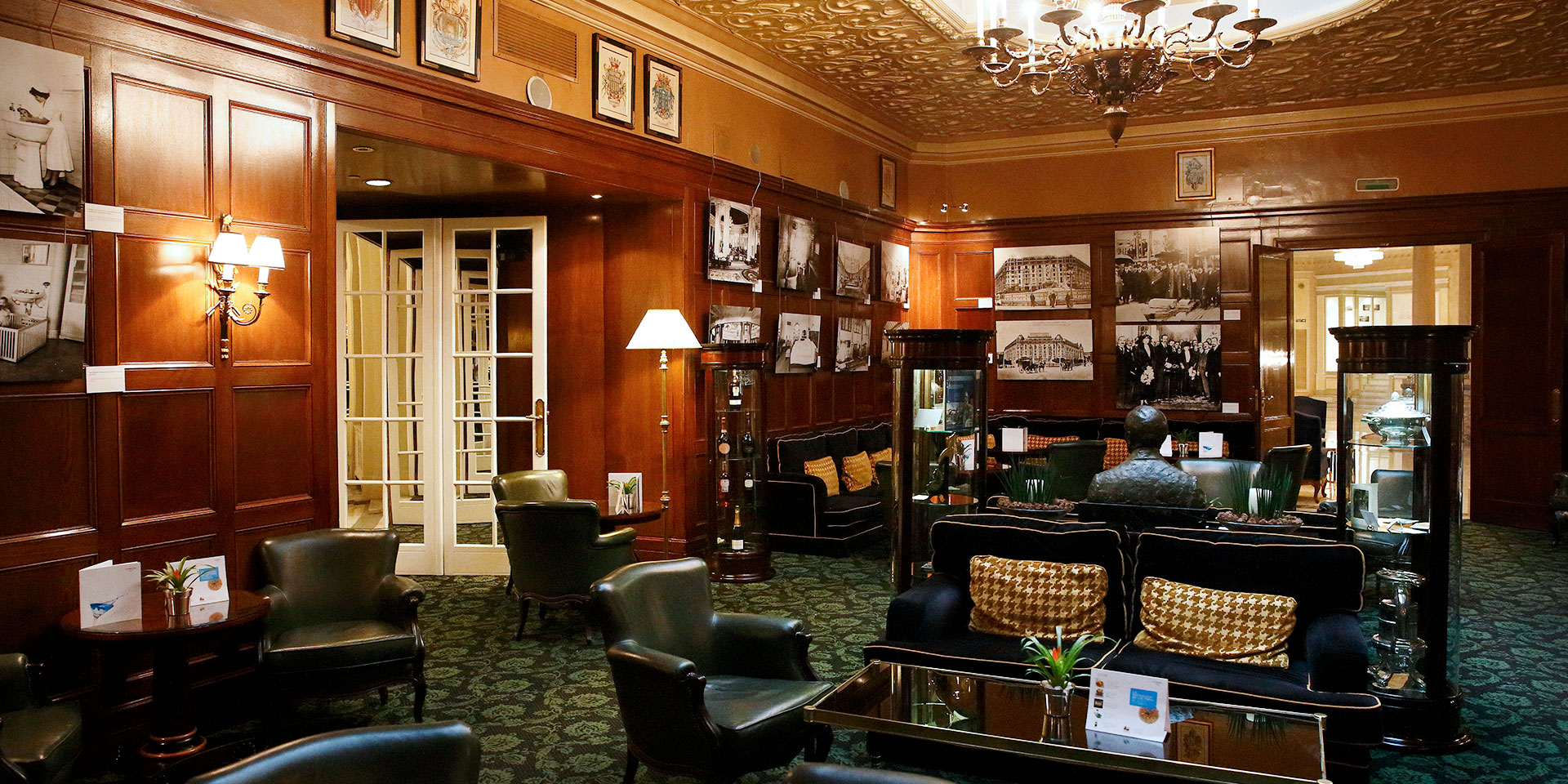
Unsurprisingly, the historic greats — the Dalís, the Hemingways, the Picassos — all liked their drinks strong. Negroni, gin fizz, whiskey more than everything. Bloody Marys always. Like the hotel itself, the bar’s current drinks menu on offer is more contemporary than it was a century ago — think craft cocktails inspired by the city’s flavors and traditions — but the classics are still in heavy rotation, with pours doled out by bartenders who’ve worked there for decades.
For literary pilgrims, trying the ultra-dry martini, a drink to which Hemingway wrote many a loving ode, is a must. For those who prefer less alcohol-forward flavors, craft cocktails like La Violetera, based on Madrid’s traditional violet candies, also offer a taste of the city and its history.
“A lot has happened here, and though there are now more places in Madrid, our essence and history keeps drawing people in,” García adds with a proud smile. “If you can go to a Palace, why go anywhere else?”





